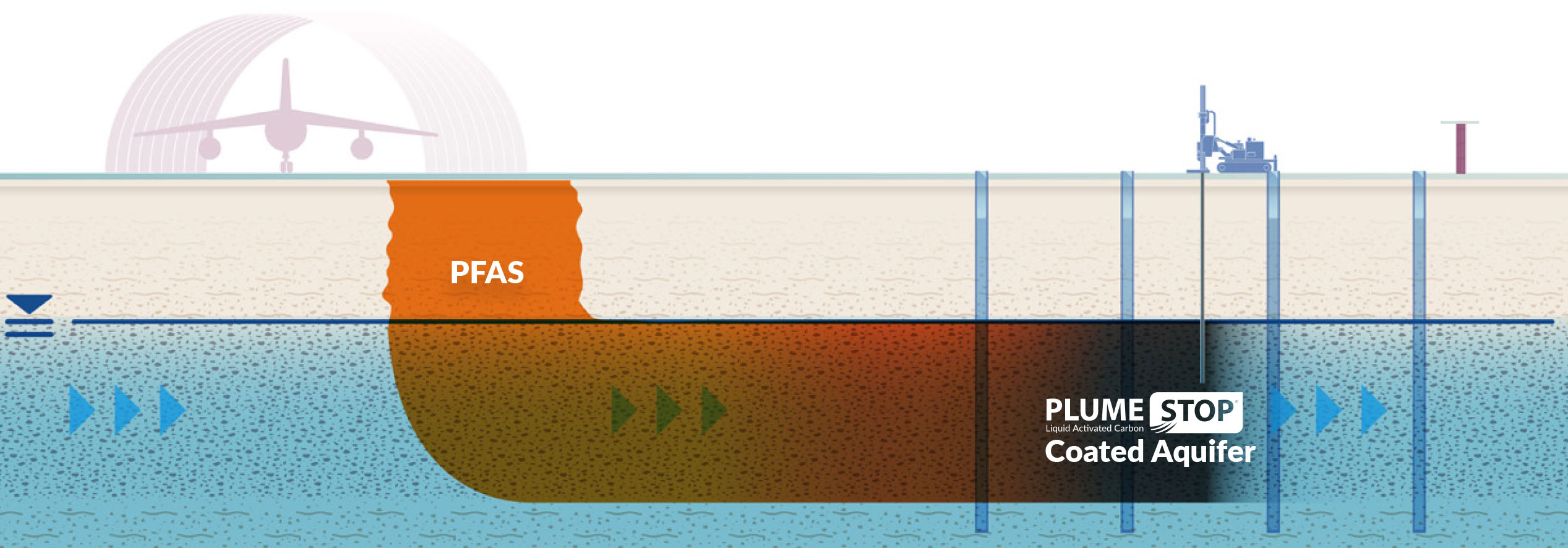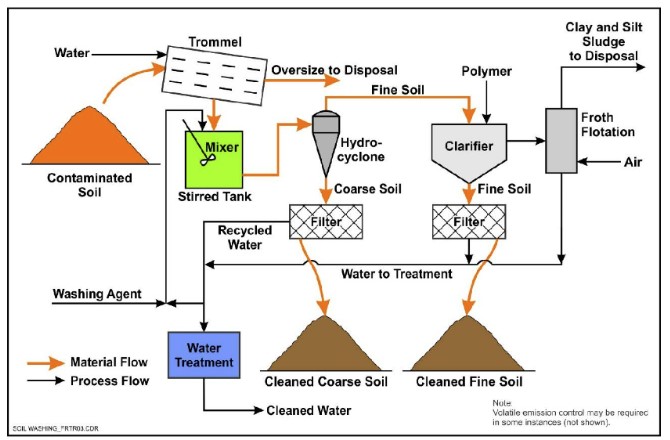Advanced Approaches for Effective PFAS Contamination Removal
The persistent challenge of PFAS contamination demands the expedition of advanced elimination techniques that can efficiently resolve these dangerous materials. Ingenious modern technologies, such as advanced oxidation procedures and various adsorption techniques, have actually arised as appealing options in mitigating PFAS from impacted atmospheres.
Understanding PFAS Residences
Although per- and polyfluoroalkyl materials (PFAS) have been commonly utilized in numerous commercial and consumer items as a result of their special properties, their perseverance in the atmosphere presents significant difficulties to public wellness and safety and security. PFAS are a team of synthetic chemicals identified by a carbon-fluorine bond, one of the toughest chemical bonds known, which adds to their remarkable security and resistance to deterioration. This stability enables PFAS to gather in the atmosphere and living organisms, bring about prospective damaging health results.
The hydrophobic and oleophobic nature of PFAS makes them especially effective in applications such as non-stick layers, stain-resistant fabrics, and firefighting foams. These exact same residential or commercial properties contribute to their environmental perseverance, as PFAS do not conveniently break down via all-natural processes. Additionally, their widespread usage has actually brought about common contamination of water resources and soils, making complex removal initiatives. Comprehending the chemical residential or commercial properties of PFAS is important for developing reliable techniques to take care of and alleviate their environmental impact. The special characteristics of these materials require a nuanced strategy to resolve the difficulties presented by their presence in ecosystems and prospective human exposure.
Cutting-edge Removal Technologies
The determination of PFAS in the atmosphere has actually stimulated the advancement of ingenious removal innovations focused on effectively removing these pollutants from impacted environments. Among one of the most promising techniques are innovative oxidation procedures (AOPs), which use powerful oxidants to break down PFAS substances right into much less dangerous compounds. AOPs can be customized to target particular PFAS structures, improving their efficiency.
One more emerging innovation is the use of adsorption media, such as activated carbon and ion exchange resins, which can uniquely record PFAS from contaminated water. These materials have shown considerable removal efficiencies, although periodic substitute and regeneration are essential to keep performance.
Membrane purification strategies, including reverse osmosis and nanofiltration, are likewise gaining traction in PFAS removal. These techniques can properly divide PFAS from water, giving a viable remedy for treating contaminated sources. In addition, thermal treatment methods, such as incineration, can decay PFAS into non-toxic results, though they call for careful monitoring to regulate emissions.
Jointly, these innovative removal technologies represent considerable developments in the ongoing fight against PFAS contamination, supplying different approaches to bring back damaged settings and secure public wellness.

Bioremediation Techniques
Bioremediation techniques supply a promising technique to attending to PFAS contamination by harnessing the all-natural abilities of microorganisms to weaken these consistent compounds (m270 waste management). This technique involves the usage of germs, fungis, and other germs that can metabolize or change PFAS substances right into much less harmful byproducts
Recent improvements in molecular biology and environmental microbiology have actually improved our understanding of microbial areas and their potential duties in PFAS degradation. Scientists are proactively checking out details stress of microorganisms, such as Pseudomonas and Bacillus, which have shown the capability to damage down certain PFAS compounds.
Sitting bioremediation techniques, where microorganisms are promoted straight in infected environments, can be especially reliable. This method frequently includes the application of nutrients or electron donors to promote microbial development and task. Additionally, ex situ techniques, such as bioreactors, enable controlled conditions that can enhance degradation rates.
In spite of the pledge of bioremediation, obstacles remain, including the complicated nature of PFAS substances and the demand for substantial area screening - m270 waste management. Continued research and advancement will be critical to refine these techniques and analyze their efficiency in varied environmental contexts
Adsorption and Purification Methods
Dealing with PFAS contamination commonly entails next page using adsorption and filtration approaches, which are designed to remove these persistent chemicals from water and soil. Amongst the numerous strategies, turned on carbon adsorption is extensively made use of due to its high surface and porosity, enabling effective capturing of PFAS particles. Granular turned on carbon (GAC) systems are specifically preferred for treating large volumes of contaminated water, while powdered activated carbon (PAC) can be used for smaller-scale applications.
Ion exchange materials additionally reveal guarantee in PFAS removal, functioning by trading PFAS ions with much less harmful ions in the water. This approach has actually demonstrated efficiency in focusing PFAS substances, promoting their succeeding removal. Additionally, membrane layer filtering methods, such as reverse osmosis and nanofiltration, operate by utilizing semi-permeable membrane layers to different PFAS from water, properly lowering their focus.
While these techniques are effective, they have to be meticulously chosen based on the details PFAS compounds existing and the environmental context. Continual innovations in materials scientific research and engineering are bring about the advancement of novel adsorbents and filtration systems that boost removal performances and decrease functional costs, therefore enhancing total remediation efforts.
Regulatory and Plan Considerations
Exactly how can effective regulative structures improve the monitoring of PFAS contamination? Extensive policies are necessary to guarantee a coordinated and robust action to the obstacles positioned by per- and polyfluoroalkyl materials (PFAS) Rules can establish clear standards for monitoring, reporting, and remediating PFAS-contaminated websites, cultivating accountability amongst sectors and public entities. (m270 waste management)

Furthermore, monetary incentives and gives can be Continued integrated right into plans to urge the adoption of sophisticated removal technologies. Policymakers ought to likewise prioritize r & d, ensuring that emerging techniques for PFAS elimination are confirmed and implemented successfully.
In addition, public recognition and engagement are essential elements of any kind of governing method, empowering neighborhoods to support for their health and safety. Ultimately, a well-structured regulatory environment will not only improve the administration of PFAS contamination yet additionally promote sustainable practices that protect future generations.
Conclusion
In summary, the complexity of PFAS contamination necessitates the fostering of innovative removal approaches. Cutting-edge technologies such as innovative oxidation procedures, adsorption methods, and membrane layer purification have actually shown significant effectiveness in eliminating these consistent compounds from contaminated water sources. In addition, governing structures need to develop to sustain the application of these innovations, making sure risk-free and efficient management of PFAS pollutants. Proceeded r & d in this area remain essential to addressing the difficulties postured by PFAS Website contamination.